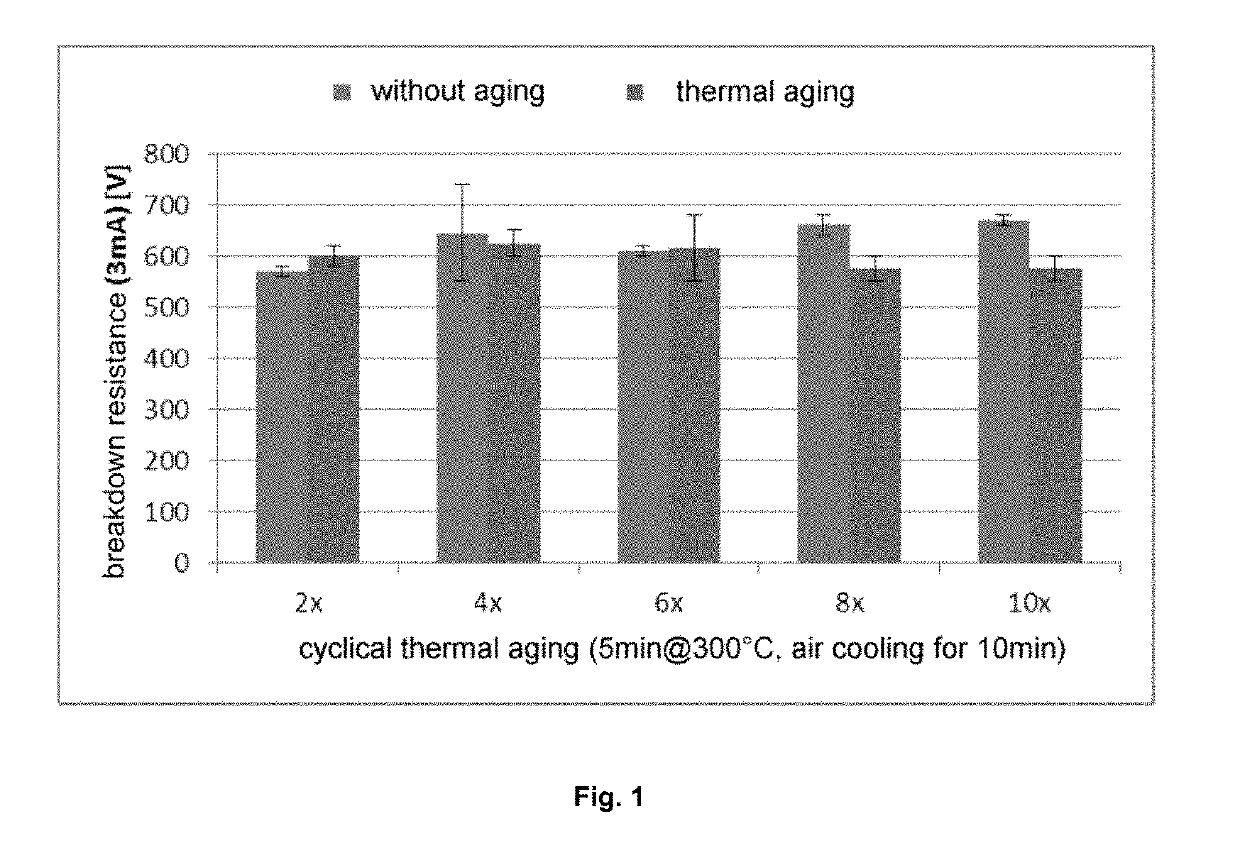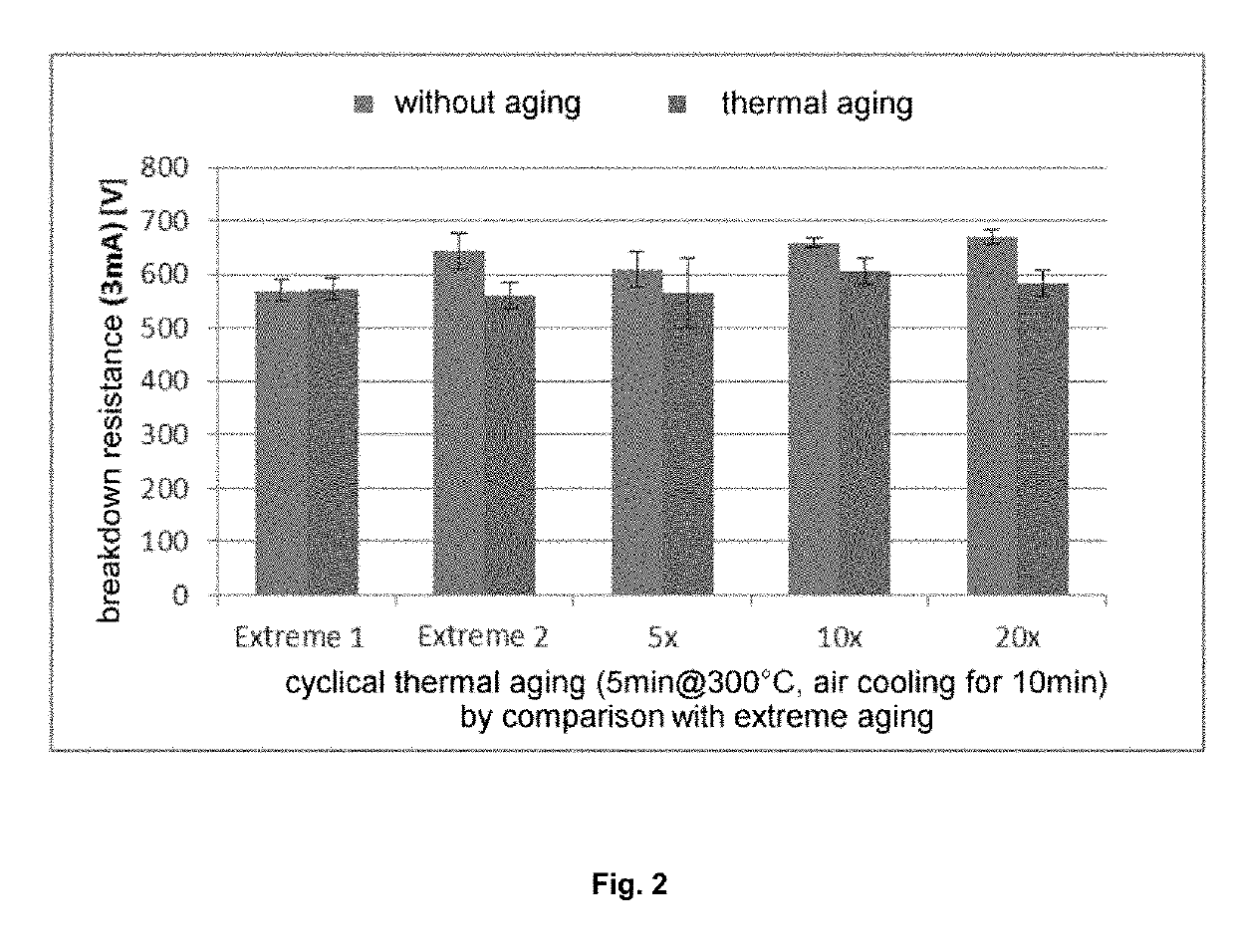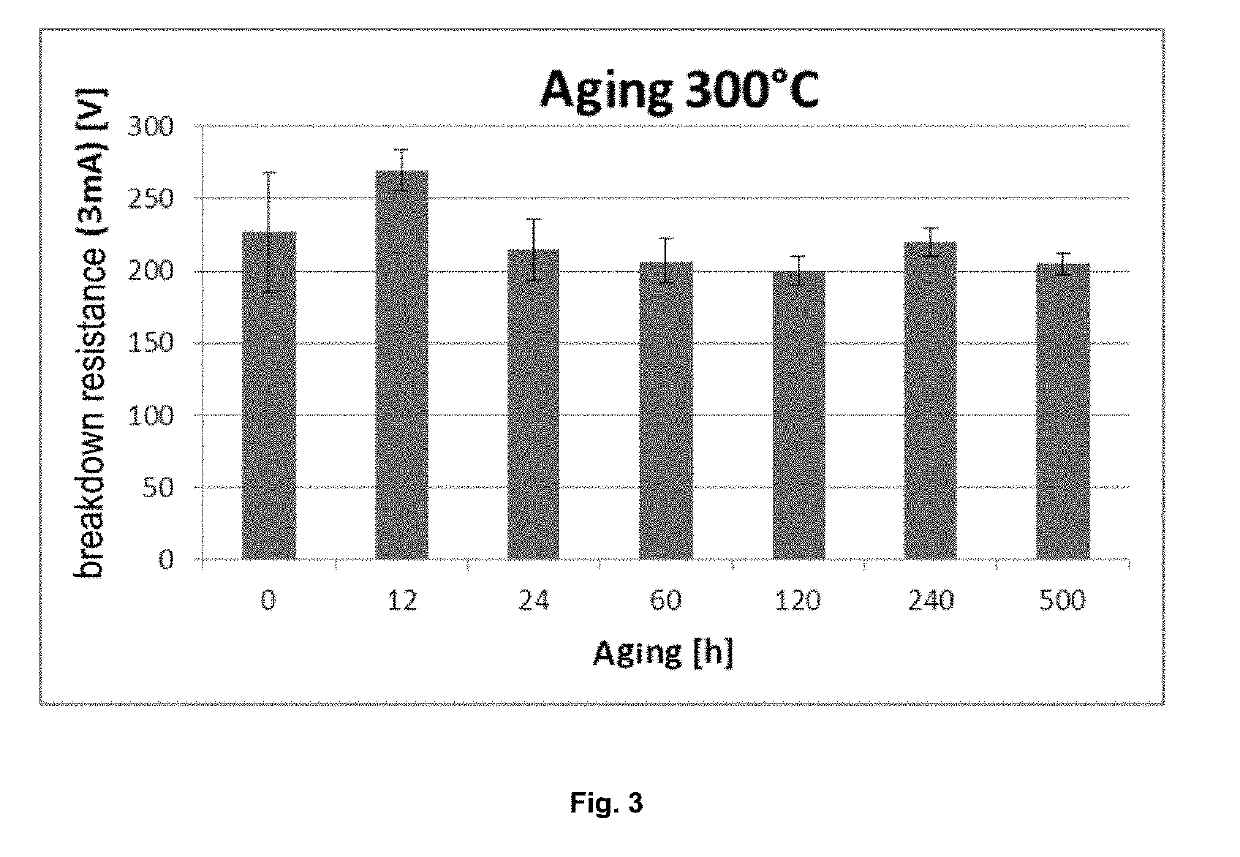Passive electrical component with coating to improve the loading capacity
a technology of electrical components and coatings, applied in the direction of coatings, transformers/inductances, transformer/inductance details, etc., can solve the problem of frequent loss of the protective effect of the covered layer, and achieve the improvement of thermal and/or mechanical durability and/or media stability of the interlayer, and the effect of improving the protection properties of the interlayer
- Summary
- Abstract
- Description
- Claims
- Application Information
AI Technical Summary
Benefits of technology
Problems solved by technology
Method used
Image
Examples
example 1
Measurement Example 1
Performance of the XPS Measurement at Layer Depth 80 nm
[0090]Surface analysis by means of photoelectron spectroscopy (XPS) covers the outermost about 10 nm of a solid-state surface. In order to be able to analyze the chemical composition of the sample material at a depth of 80 nm by XPS, the surface is removed by ion beam bombardment. For this atomization process, argon ions with an energy of 3 keV are typically used. The duration required to remove the uppermost 80 nm of a sample surface depends on the instrument-specific atomization rate. This is determined experimentally in each case by comparative measurements on corresponding reference samples. The typical pressure range for sputtering processes of this kind is in the range from 1*10̂−5 to 1*10̂−6 mbar.
Measurement Example 2
Testing of Electrical Insulation Properties:
Partial Discharge Measurement Technique:
[0091]→Nondestructive test method for determination of the electrical insulating effect of coatings (by...
example 5
Measurement Example 5
Nanoindentation Measurement
[0108]Nanoindentation is a testing technique by which the hardness of surface coatings can be ascertained by means of a fine diamond tip (triangular pyramids [geometry according to Berkovich], radius a few hundred nm). In this case, by contrast with the macroscopic determination of hardness (for example Vickers hardness), the measurement is not made on the remaining indentation trough that has been made by a normal force, and instead a penetration depth-dependent cross-sectional area of the nanoindenter has been assumed. This depth-dependent cross-sectional area is ascertained via a reference sample with known hardness (generally high-purity quartz glass).
[0109]During the application of the normal force, nanoindentation uses sensitive steering electronics (capacitative plates) by which the penetration depth can be measured precisely as the normal force rises and falls again quite differently to the conventional method. During the initi...
working examples
Example 1
Low-Pressure Plasma Coating Process
[0120]The deposited plasma layers based on an inorganic matrix structure (preferably silicon-based) have a comparatively high organic character which, by comparison with SiOx layers, results in a higher crack onset strain. The plasma layers are preferably deposited under reduced pressure at about 10−2 mbar with the aid of a high-frequency plasma discharge (PE-CVD). In this case, a silicon-containing working gas is fragmented. The resultant fragments precipitate on the substrate as a thin layer. In order to increase the density of the layer, an ion-assisted method is employed, meaning that the partly ionized fragments are fired into the growing layer under the influence of an electrical field. The use of this technology ensures the applicability of the coating to complex coil geometry.
Low-Pressure Plasma Coating Process
[0121]The plasma coating is conducted under reduced pressure with a reactor of size 360 L at about 10−2 mbar. An aluminum c...
PUM
| Property | Measurement | Unit |
|---|---|---|
| depth | aaaaa | aaaaa |
| thickness | aaaaa | aaaaa |
| thicknesses | aaaaa | aaaaa |
Abstract
Description
Claims
Application Information
 Login to View More
Login to View More - R&D
- Intellectual Property
- Life Sciences
- Materials
- Tech Scout
- Unparalleled Data Quality
- Higher Quality Content
- 60% Fewer Hallucinations
Browse by: Latest US Patents, China's latest patents, Technical Efficacy Thesaurus, Application Domain, Technology Topic, Popular Technical Reports.
© 2025 PatSnap. All rights reserved.Legal|Privacy policy|Modern Slavery Act Transparency Statement|Sitemap|About US| Contact US: help@patsnap.com



